Lesson Description
This lesson introduces learners to lichen and the concept of symbiosis. After learning about lichen, learners will go on an interpretive hike to find examples of lichen growing in different environments in the wild.
Associated Standards
|
K-2
CCSS.ELA-LITERACY.SL.2.2 Recount or describe key ideas or details from a text read aloud or information presented orally or through other media. CCSS.ELA-LITERACY.SL.2.3 Ask and answer questions about what a speaker says in order to clarify comprehension, gather additional information, or deepen understanding of a topic or issue. |
3-5
4LS1-1 From Molecules to Organisms: Structures and Processes CCSS.ELA-LITERACY.SL.3.1 (also SL.4.1, SL.5.1) Engage effectively in a range of collaborative discussions (one-on-one, in groups, and teacher-led) with diverse partners on grade 3 topics and texts, building on others' ideas and expressing their own clearly. CCSS.ELA-LITERACY.SL.3.3 Ask and answer questions about information from a speaker, offering appropriate elaboration and detail. |
6-8
CCSS.ELA-LITERACY.SL.6.2 Interpret information presented in diverse media and formats (e.g., visually, quantitatively, orally) and explain how it contributes to a topic, text, or issue under study. MS-LS1-4 From Molecules to Organisms: Structures and Processes Use argument based on empirical evidence and scientific reasoning to support an explanation for how characteristic animal behaviors and specialized plant structures affect the probability of successful reproduction of animals and plants respectively. |
Essential Questions
|
Enduring Understandings
|
Learning Objectives
|
Materials
- Paper or Exploration Journal
- Writing utensils
- Magnifying Glass
- Disposable Camera, Cell Phone, or Cheap Digital Camera for photo taking
Lesson Instructions
- Lichen are composite organisms composed of fungi and algae. The algae photosynthesizes to produce energy while the fungal portion, now known to be comprised of at least two different fungal partners - an ascomycete (cup fungi) and a basidiomycete (club fungi - traditional mushrooms), provides the structure and reproductive structures of the lichen. The word symbiosis was developed in response to the study of lichen. Lichen often grow on trees, rocks, and soil. Lichen are capable of sequestering nitrogen from the air and can help clean the air and water. Some lichen have medicinal properties, whereas others can be very toxic - so much so that some indigenous cultures would use lichen to poison wolves and other dangerous animals that might attack them or their livestock.
- Anticipatory Set:
- Have different examples of lichen available on a table for learners to examine for several minutes before the lesson begins.
- Ask learners to identify what was on the table.
- If they say lichen, ask them how they know it is not moss.
- If they say moss, ask them how they are sure.
- Explain to learners that today they will be learning all about lichen.
- Define the term symbiosis. Ask learners to share other examples of symbiosis that they can think of.
- Show the National Geographic "What's in a Lichen" video.
- Explain to learners that today they will have the chance to go on a nature hike to look for signs of lichen. It will be their job to photograph as many different kinds of lichen as they can find. Not only are they to find lichen growing in as many unique places as possible, but they are also to find as many different colors, shapes and textures of lichen as well! Learners will have approximately ten minutes to capture their photos. Tell learners that as they hunt for lichen, they should think about the things they see that they find interesting, and they should be prepared to share one question they have about lichen after the hunt. Once the ten minutes are up, learners are to regroup.
- Take learners to a safe outdoor environment that has been pre-scouted. Give each learner a magnifying glass or loupe and a camera for picture taking. If learners are too young for cameras, adult chaperones can be in control of the camera instead.
- This activity may be performed in groups for large groups of learners or individually if dealing with a small group of learners. Use your own discretion.
- After ten minutes has passed, ask learners to regroup in a circle.
- Go around the group and have each learner share one thing that they thought was interesting, and one question that they now have about lichen.
- Take the pictures that the learners took and compile them into a poster titled, "We Like Our Lichen!" and display to learners on another day to show them the amount of diversity that they found. When displaying the poster, as learners to explain what lichen are, how they live, and what functions they serve in the environment. Ask learners to remind you of other examples of symbiosis.
References and Resources
Our lesson plans utilize the backward design model presented by Understanding by Design by Grant Wiggins and Jay McTighe


